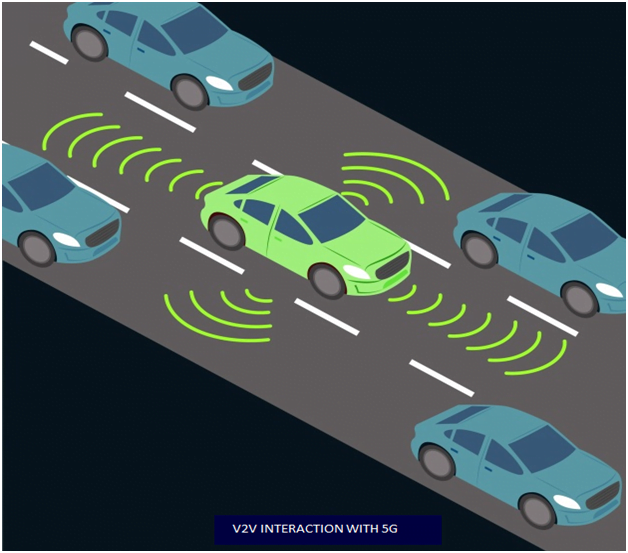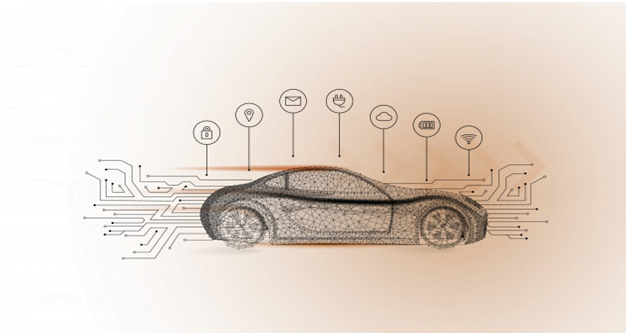The car manufacturing business is encountering exponential development of autonomous mode technological updates. 5G associations will impact the improvement of self-driving vehicles, making them quicker, more astute, and more secure.
The force for the acknowledgment of efficient vehicles in regular use is something car companies are very vigilant about and keep a close eye. For example, organizations, such as Tesla and Toyota, are presently trying self-driving cars on the streets in places like Pittsburgh, Boston, and Phoenix. While numerous Americans previously had grave concerns encompassing driverless vehicles, an ongoing deadly mishap by an independent Uber vehicle has many addressing if efficient cars will ever be sufficiently protected to feel secure sharing our streets.
In any case, with self-driving highlights as of now across the board, it creates the impression that completely self-governing vehicles will show up on our streets, and maybe sooner than individuals figure it out. Additionally, they will likewise become more secure with 5g as a lot safer option than human-controlled vehicles.
For self-sufficient vehicle innovation, numerous specialists concur that huge scope reception of 5G—the cutting edge remote innovation—is required. The current 4G arrangement is not sufficiently quick to online bolster more secure and more intelligent self-sufficient vehicles.
Nokia’s Jane Rygaard said in an ongoing meeting with the BBC: “We have to see to what extent it takes for the message to be transmitted among sensors and get to the PC in every vehicle. Post which, we need to answer to what extent it takes for the PC to settle on a choice, and the entirety of this must be in less time than a human would take to settle on a choice, which is roughly around two milliseconds. We need a system supporting this, and 5G is that arrangement.”
The current 4G is essentially not quick enough to give the capacity to provide self-governing vehicles human-like reflexes that may have forestalled the Uber vehicle casualty.
Driverless vehicles are only one of the numerous unimaginable innovations that will probably evolve with 5G. Computer-generated reality and human-made consciousness are two additional instances of the discoveries that we can expect once the information finds innovative headway.
Evolution of networks
The remote information arrangement has progressed consistently in recent years, and some extraordinary advances have been hot behind it. The advanced development started in the mid-’80s with the presentation of the original simple cell framework. Although mobile phones were still moderately uncommon, individuals could at long last converse with one another in a hurry.
By the mid-’90s, second-age and 2.5G versatile frameworks empowered individuals to send text, yet it wasn’t until the beginning of the new decade that individuals approached broadband-speed web through 3G. Telephones developed from gadgets for making calls to an apparatus for multifaceted correspondence, diversion, shopping, and significantly more.
4G is the most recent advancement, and it offers enough data transmission and speed to permit continuous data and area sharing. This evolution empowered the sharing economy and helped bring forth organizations like Uber and Lyft. It’s as yet not quick enough to help advancements that require the speed of human reflexes. That is the place 5G comes in.
Why 5G is Crucial for Autonomous Cars

The fifth-age remote innovation is required to interface nearly everything around us with an ultra-quick, profoundly reliable, and utterly responsive system. 5G will permit us to use the maximum capacity of cutting edge innovations, such as computerized reasoning, augmented simulation, and the Internet of Things (IoT).
Self-driving vehicles utilize many sensors to make cars quicker and more astute. These sensors create extraordinary measures of information, substantially more than some other IoT appropriation would. Dealing with, handling, and examining this data measure requires a lot quicker system than the current 4G innovation. Independent vehicles, frameworks require mind-blowing information handling capacities and paces expected to impersonate the planning of human reflexes.
As per Aakash Sarin, CTO of Copper Mobile, mobile applications’ future would revolve around connectivity with the lag-free response times. Apps that would connect vehicles and the entire ecosystem of data sharing would act as one cohesive unit.
Future efficient vehicles will create almost two petabits of information, which is 2 million gigabits. “With a propelled Wi-Fi association, it will take 230 days to move seven days worth of information from a self-driving vehicle. That is why we need much quicker ASIC handling innovation and items,” according to Dr. Laskar of Maja systems.
The world’s driving semiconductor organizations, such as Intel and Qualcomm, are progressing toward an ASICs transformation, joining tremendous accessible transfer speed at 5G frequencies with new imaginative computerized radio and receiving wire designs. These organizations are making chips that would transform self-governing vehicles into portable server farms, permitting driverless cars to create endless, sophisticated choices. Market watchers state that 5G when received at the full scale, will offer web accelerates to multiple times quicker than 4G. It will introduce energizing opportunities for the car business utilized for vehicle-to-vehicle (V2V) and vehicle-to-everything (V2X) availability. Moreover, the innovation’s low inertness will make these vehicles uncommonly protected and dependable on the streets—more secure than vehicles today that are worked by individuals.
Edge Computing Powered by 5G
Offering a scope of focal points, numerous specialists perceive edge processing as one of the most recent noteworthy venture patterns. Edge registering alludes to a framework that permits information handling near the source as could be expected under the circumstances, empowering quicker preparation of information, decreased dormancy, and generally speaking better results. About edge registering, there are numerous difficulties as far as system dependability is concerned.
With self-ruling vehicles comes the duty to deal with the framework that forms enormous measures of unstructured information and security assurance when gathering touchy information at the edge. Edge registering will permit rapid reaction time on account of 5G’s guarantee of lower idleness and capacity to offload processing assignments and better area mindfulness.
Remote Pilots- Rising in popularity
The autopilot function gives control over to the driver. Numerous tech organizations have been trying remote pilots, who are prepared drivers sitting miles away in a test system that can take over quickly. To accomplish it, a steady and quick association offered by 5G would be significant.
Furthermore, 5G will furnish travelers with self-driving vehicles with top-notch infotainment administrations. It will make correspondence specialist organizations a significant accomplice for self-governing cars, regardless of whether for information investigation, wellbeing, or amusement reasons.
If you are worried about driverless vehicles and consider the development of cell phone gadgets in recent decades, At a certain point, you presumably couldn’t envision having the option to call somebody on the opposite side of the world from a pocket-sized gadget. Today, you can’t envision a day without the capacity to associate with companions, family, and partners the world over utilizing your cell phone.
Innovation and system development carry inconceivable and helpful headways to society. 5G’s vows to bring more secure and more intelligent self-driving vehicles would be among the most astounding advancements within recent memory.
Mobile Applications would be ubiquitous with driverless cars

Mobile apps would become the mainstay of the 5G revolution. From creating simulations for remote pilots to maneuver driverless cars to powering data processing over networks and infrastructures, everything would become seamlessly integrated into our mobile devices.
The very command center for cars would be our mobile phones. Gamification type apps with very realistic simulations would become commonplace for mobile users all over the world.
Infotainment systems would evolve, with a much richer experience, propelling enhancements in mobile technology with development companies building many feature-rich applications, especially with fast streaming media capabilities.
Our phone would become the gateways for connecting cars and infrastructures, and all the data processing would run seamlessly on our apps in the background. Car companies would integrate mobile applications, and mobile phones would become our black box. App development would evolve for the better. Not only our apps have to be more robust and secure, but there would also be plenty of regulatory requirements, and mobile app development companies would have to adapt or perish.




